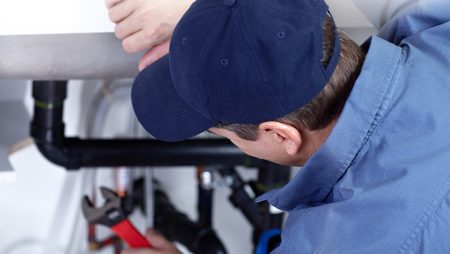According to a study by the Lawrence Berkeley National Lab, nearly 90% of Americans say they’ve rarely (or never) programmed their thermostat because they’re not sure how to do it. Truth be told, it’s really not that hard — and it’s definitely worth doing because it can save you up to 15% a year on energy costs.
The first step is to pick the thermostat that best suits your scheduling needs so you can “set it and forget it,” an approach the U.S. Energy Department advocates to get the most savings.
Picking the Right Thermostat
For starters, it’s important that you have a programmable thermostat that meets your household’s needs. There are four basic kinds of programmable thermostats, each with a distinctive scheduling style:
- 7-day programming. Best for individuals or families with erratic schedules, since this is the most flexible option. It lets you program a completely different heating/cooling schedule for each day of the week as needed.
- 5-1-1 programming. One heating/cooling schedule for the week and the ability to set a different heating/cooling plan for Saturdays and Sundays independently as well.
- 5-2 programming. Similar to 5-1-1 programming, except Saturday and Sunday will share the same heating/cooling plan.
- 1-week programming. You can only set one heating/cooling plan that will be repeated each day for the entire week.
And don’t forget that in addition to the ability to set daily time schedules, you’ll also need a program for both the cooler and warmer months! Keep all of this in mind when you are picking out a new replacement thermostat.
Programming Your New Replacement Thermostat
Most programmable thermostats have a pre-programmed setting that’s supposed to be for the “typical” American family. But with our modern hectic lives, what family’s schedule is typical these days? You need to be sure to adjust the thermostat’s settings so it’s in sync with the life you and your family lead instead of a pre-described schedule suggested by manufacturer.
Also, it’s important to note that rather than changing the temperature constantly, homeowners are better off establishing efficient set points for longer periods of time. Program the thermostat and leave it for a minimum of 8 hours to get maximum efficiency and lower energy costs.
The ideal programming options are based on:
- Wake Time
- Leave Time
- Return Time
- Sleep Time
The U.S Department of Energy suggests the following settings in order to shave up to 15% off your energy bill:
Winter:
- For the hours you’re home and awake, program the temp to 68°F.
- Lower by 10° to 15° for the hours you’re asleep or out of the house.
Summer:
- For the times you are home, program air conditioning to 78°F.
- For the days you don’t need much cooling, be sure to manually turn off the AC.
- Don’t forget to program the AC to shut off during the hours you’re out of the house.
Here are a few programming timing tips that can help you create the best set-it-and-forget-it heating and cooling schedule for your home, providing you with the best mix of energy savings and environmental comfort:
- Shut down heat or air conditioning 20 to 30 minutes before you leave home each day.
- Turn on heat or air conditioning 20 to 30 minutes before you come home each day.
- Reduce the heating or cooling 60 minutes before you go to sleep each night.
- Increase heating or cooling about 30 minutes before you wake up each morning.
Of course, you can spend a little time tweaking your program for a few days to make sure it feels right. Also, it’s important to note that with a newer Wi-Fi-enabled thermostat you can control your home’s temperature while on the go. That way you can make changes when you aren’t home and aren’t wasting energy if you’re running late or forgot to create a new program before going on vacation.
Thermostats That Make Programming Easier
Want something that’s even easier to use? Avis has you covered. Newer, more high-tech models have simplified the process:
The Nest Learning Thermostat: The cream of the crop, the Nest creates a custom heating and cooling schedule for your home based on motion detection technology. Additionally, since it has Wi-Fi it can be controlled remotely.
[video_youtube video_id=”L8TkhHgkBsg”]
Honeywell Wi-Fi Smart Thermostat: This device makes it easy to create a customized heating and cooling plan. Unlike conventional programmable thermostats, it has a large color interface that displays a simple menu that walks you through all the programming steps. It also “learns” your home and will send you personal notifications if the temperature is not right, or if there’s a power outage.
[video_youtube video_id=”4MyP5sbrLuU”]
Don’t Have A Programmable Thermostat Yet?
If you are still using an old thermostat, you’d be surprised at how much money you can save by upgrading to a newer one. Avis Plumbing & Air Conditioning is here to help. Before buying a programmable thermostat, it is important to identify the type of equipment used to heat and cool your home so you can check for compatibility. Otherwise, you may not reap the rewards of energy savings and may risk harming your heating and cooling equipment. This is why it is best to call a professional like Avis.
If you want to save money while increasing the comfort level of your home or office, give the Cape Coral plumbing pros at Avis a call and talk to us about upgrading your thermostat.







No Comment
You can post first response comment.